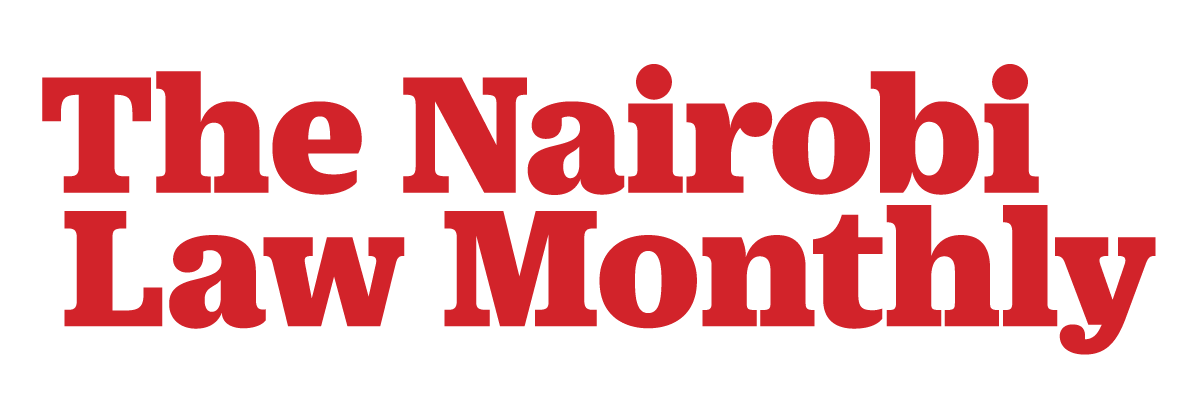By Rosemary Okumbe
In 2016, the Office of the Ombudsman (Commission of Administration of Justice) moved to court to challenge the constitutionality of the 2009 Motor Underwriting Guidelines issued by the Insurance Regulatory Authority. The Ombudsman alleged that the guidelines had stifled competition in the insurance industry by setting minimum rates for premium prices.
-
Sale!
Download Nairobi Law Monthly Magazine July 2024 Edition
Downloads Original price was: KShs200.00.KShs100.00Current price is: KShs100.00.
By introducing the guidelines, IRA had sought to set minimum premium rates that were aimed at protecting the insurance industry, whose stability had been threatened by unsustainable price wars. The upshot was to ensure that strong and stable companies protect the interests of the public. In March 2017, the High Court at Milimani ruled that IRA had acted unconstitutionally as its mandate did not include fixing prices, and subsequently declared the guidelines null and void.
In essence, this ruling opens up the insurance industry to competition, as insurance underwriter will charge less for motor insurance products in a bid to attract and retain consumers. However, technically, the kind of healthy competition envisioned by Ombudsman could potentially destabilise the industry, with detrimental effects on the economy. Of great concern is the Motor PSV insurance segment, which has seen the collapse of around eight Insurance companies since 1996, due to a number of reasons including poor corporate governance, inadequate capitalisation and unsustainable price wars. A good number of PSV insurance underwriters have either exited or shunned the PSV segment altogether due to these risks.
For years, policymakers and regulators have grappled with identifying the right solution for the troubled PSV insurance industry whose fortunes continue to deteriorate by the day. The ruling by the High court now sends stakeholders back to the drawing board. Currently only two PSV insurance underwriters – Directline and Invesco Assurance – have been left to navigate the murky PSV insurance waters, while three others – BlueShield, United Insurance and Concorde Insurance – are under statutory management. Suffice it to say that Invesco Assurance is itself a survivor of statutory management.
The PSV motor insurance is underwritten as general insurance business. The governing legislation is the Insurance Act and its regulations, and the Insurance Motor Vehicle Third Party Risks Act, which makes the third party cover compulsory for all motor vehicles on public roads. In 2013, further attempts were made to address the underlying risks in the subsector, with the introduction a structured compensation plan, which would prescribe a definite amount of compensation for injuries sustained by third parties in accidents caused by the negligence of motor vehicles. However, its operations have been suspended by the courts pending determination of a suit challenging its constitutionality.
Like all insurance products, motor PSV premium rates are priced according to actuarially determined rates as opposed to market rates. The former takes into account operating expenses such as claims and acquisition costs. This is the trend world over. Through guidelines introduced in 2013, insurance companies were further required to have a robust actuarial function capable of evaluating and providing advice to the insurer regarding inter alia premium and pricing activities. These guidelines were in line with the 2009 Motor Underwriting Guidelines, which as already stated, required insurance companies to charge minimum prices for motor rates.
The rationale behind actuarially determined rates, which proscribe for minimum rates, is simple. Motor PSV insurance underwriters incur indefinite liabilities arising from third-party claims, making it close to impossible to predict their outlay. According to statistics by the National Transport and Road Safety Authority (NTSA), approximately three thousand Kenyans lose their lives on the roads each year. These statistics do not include data on the injuries sustained and the extent of such injuries. Compensation for such injuries would run into billions of shillings annually after taking into account incidental costs such interests, medical, advocate and court fees, hence the need for scientific assumptions that prescribe minimum rates to cushion the industry from such nebulous claims.
With escalating claims costs and declining revenue streams, it remains to be seen how quickly the insurance regulator will move to arrest the situation. In the Finance Act 2015, the Cabinet Secretary introduced the risk-based capital guidelines that shall come into full effect in June 2018. The guidelines are aimed at ensuring that Insurance underwriters maintain capital adequacy levels commensurate with their risk profile. This could be a window for companies to charge competitive premium prices. However, this will wholly depend on whether or not their risk profiles will allow it.
By contrast, the Competition Authority, the body charged with inter alia protecting consumers from unfair and misleading market conduct could also come in to save a sinking ship. Certain provisions of the Competition Act create room for companies to be exempted from the purview of the Act, if it can be shown that anti-competitive prices are necessary for the stability of the industry. Policymakers and regulators will thus be a step closer towards finding a lasting solution for an industry whose penetration levels are still below three per cent. ^
Writer is an Advocate of the High Court of Kenya and a Certified Public Secretary


